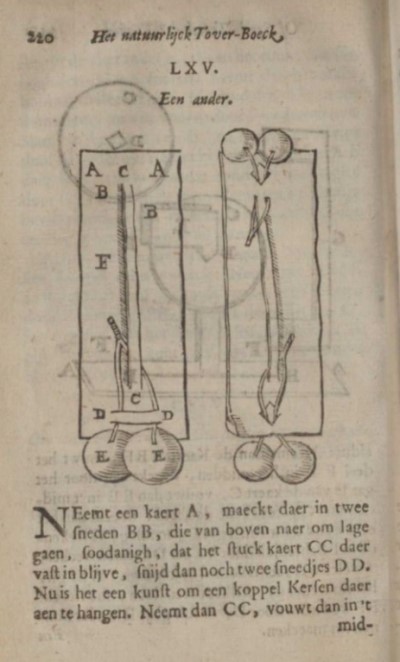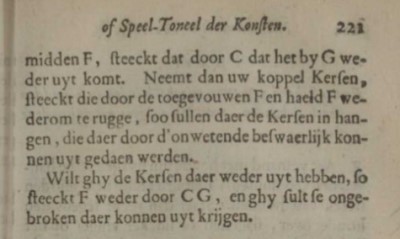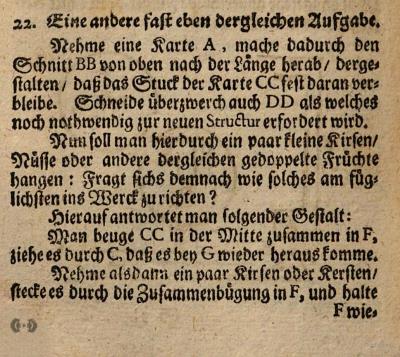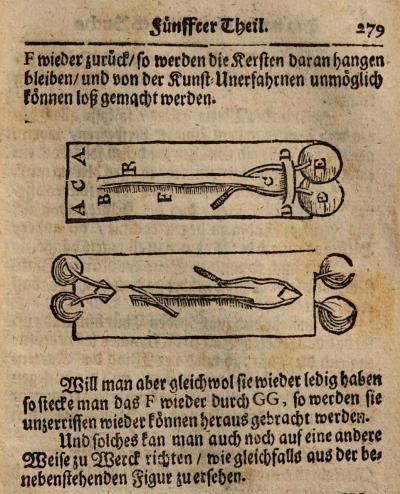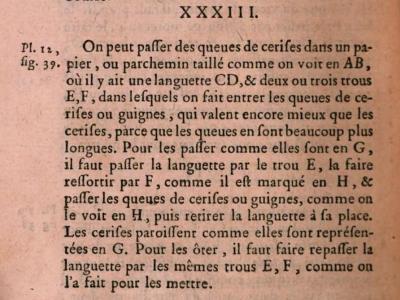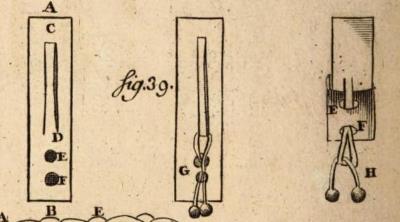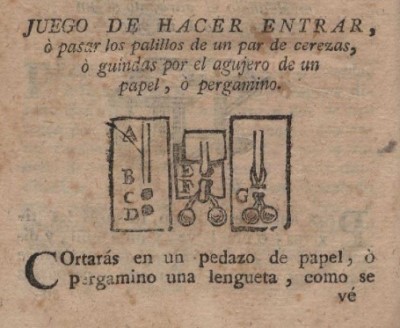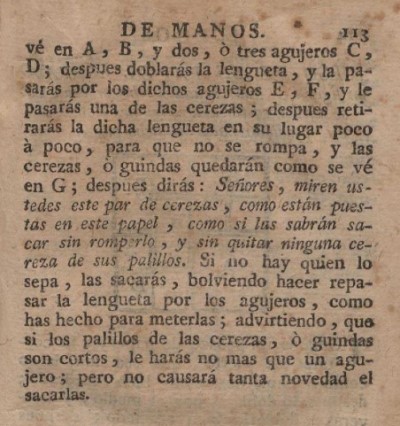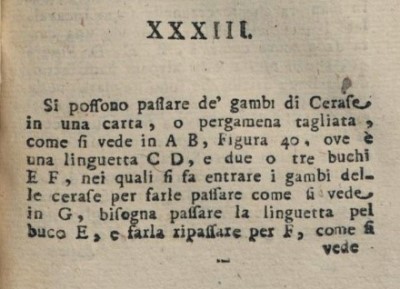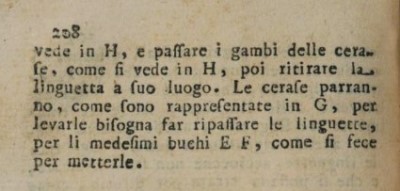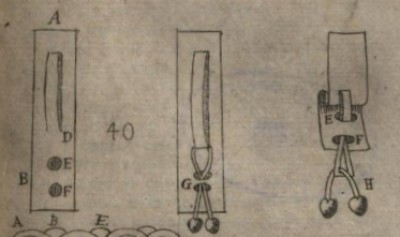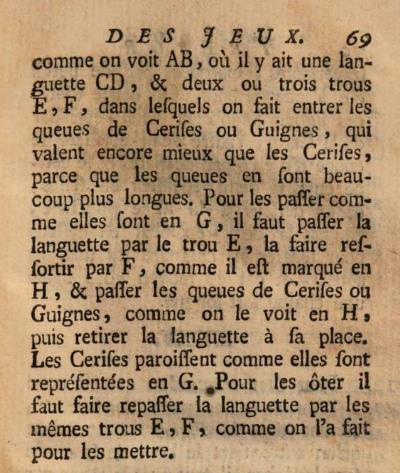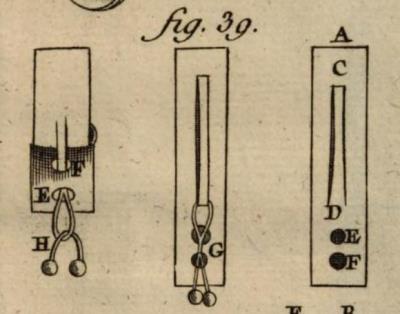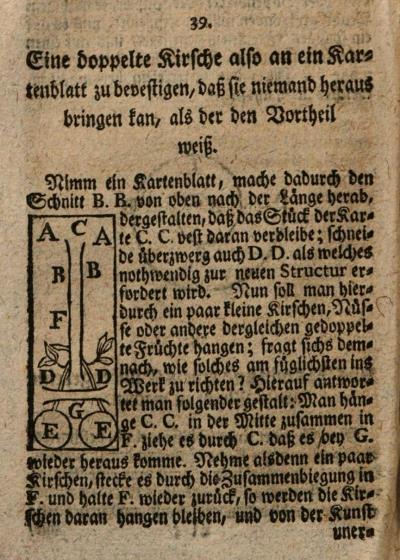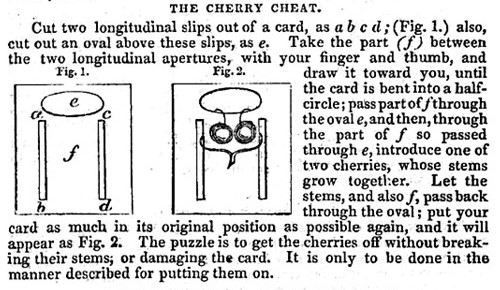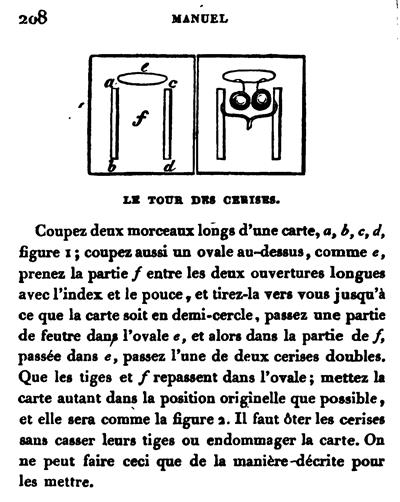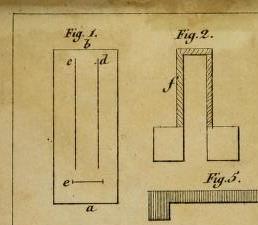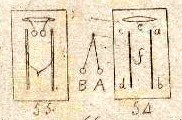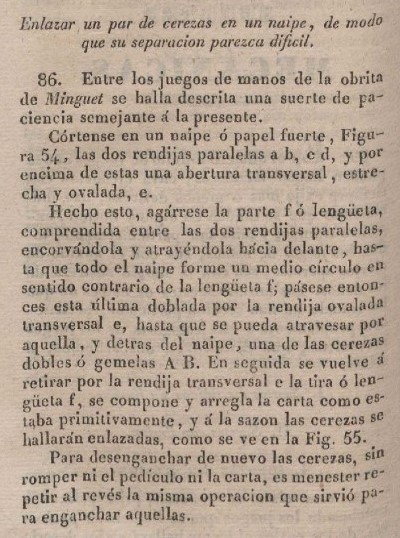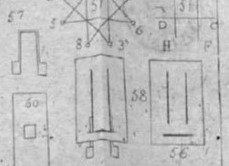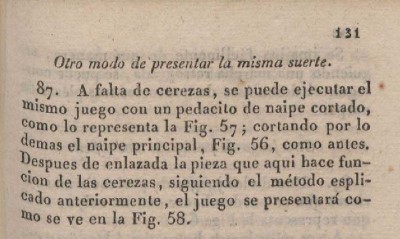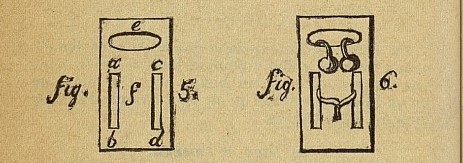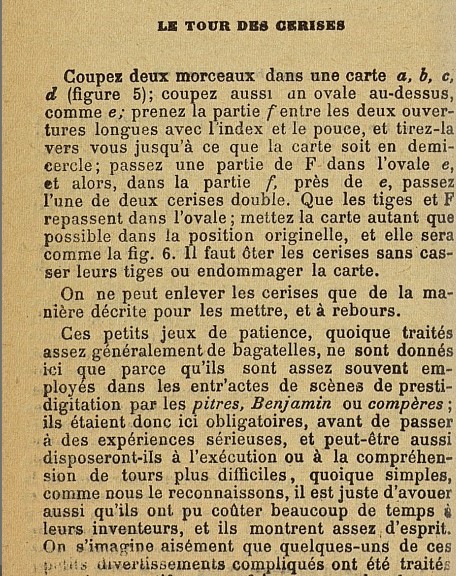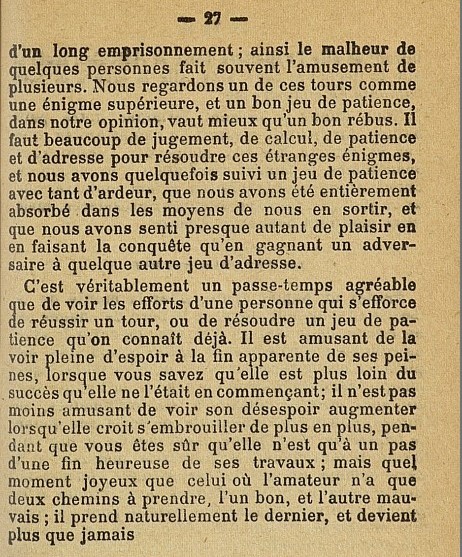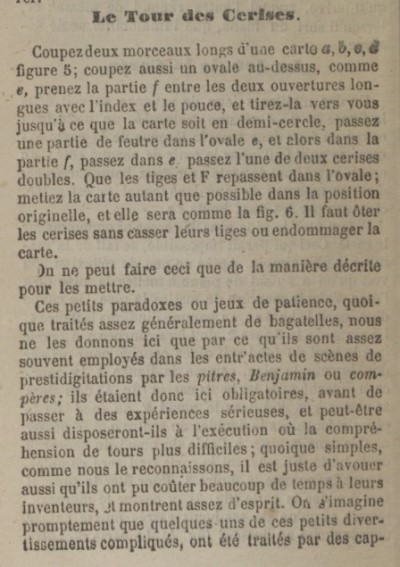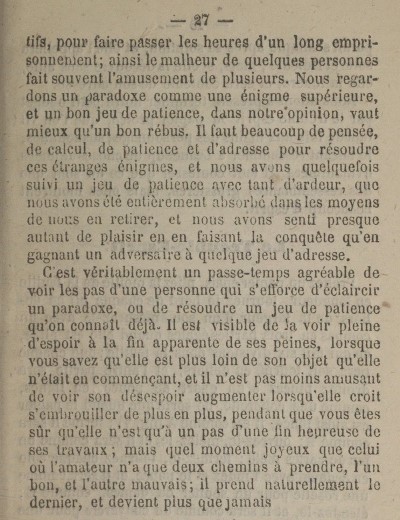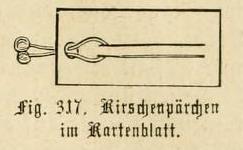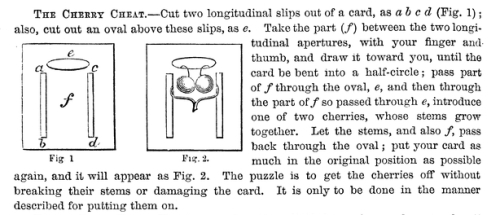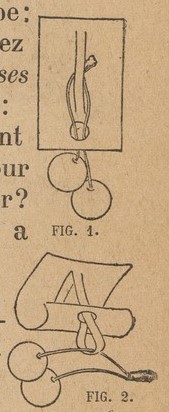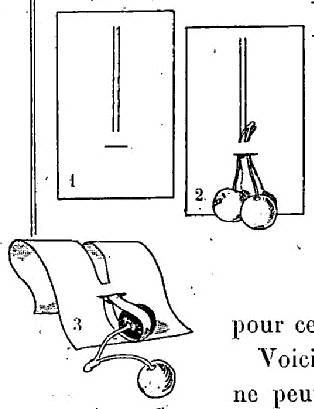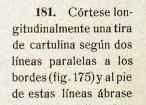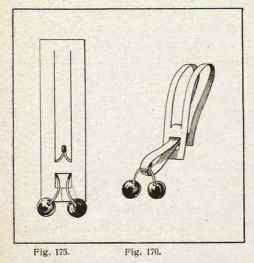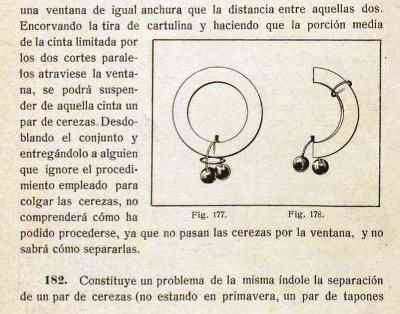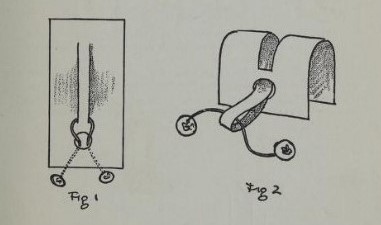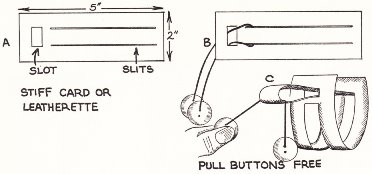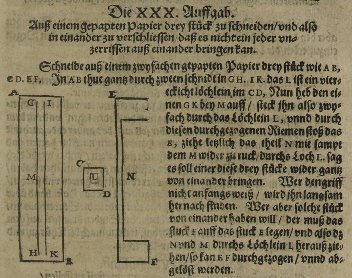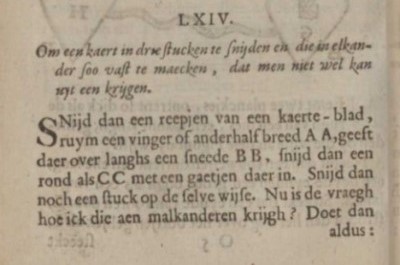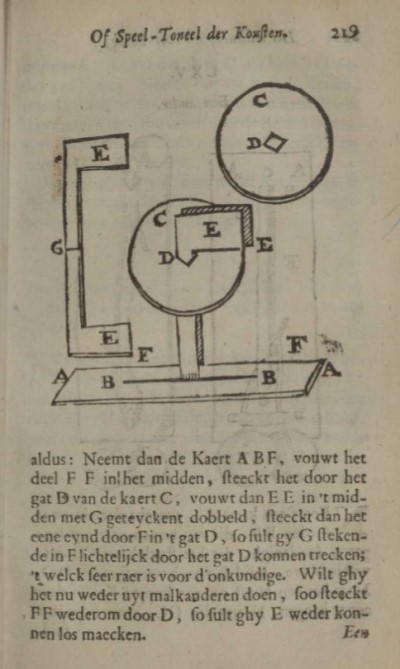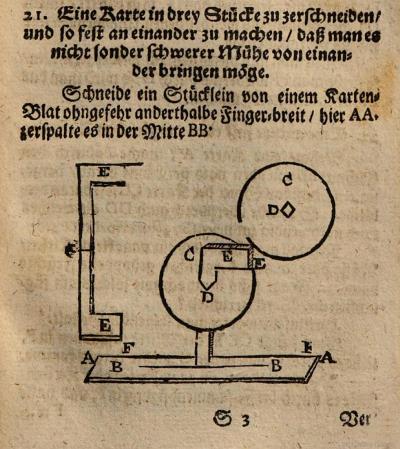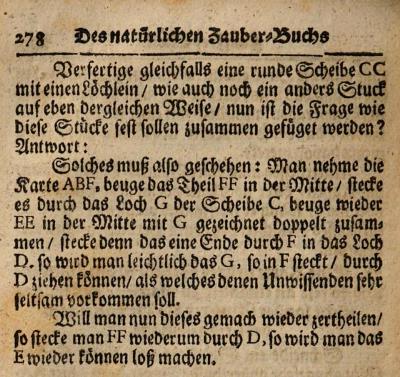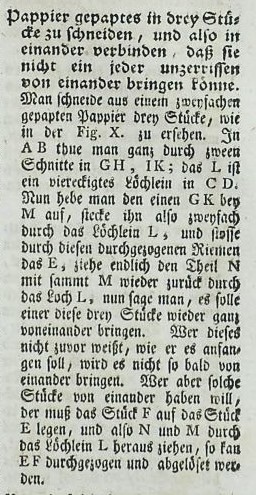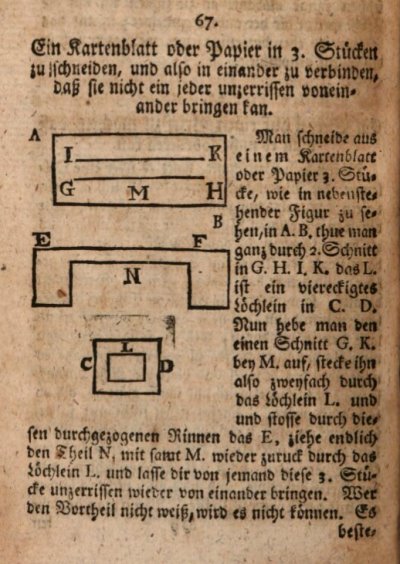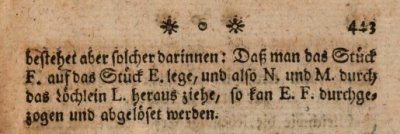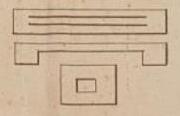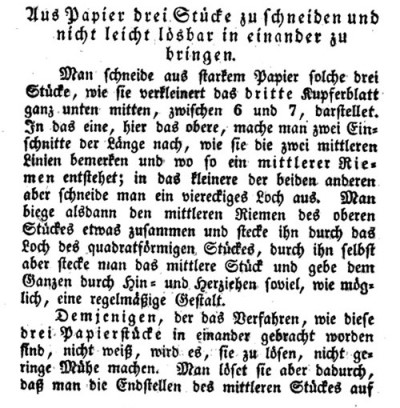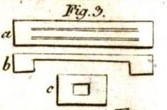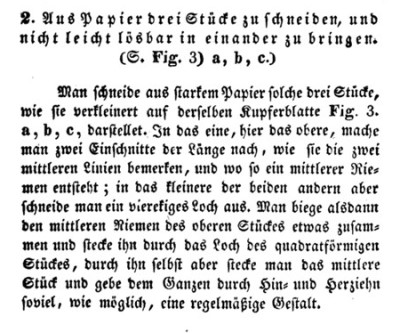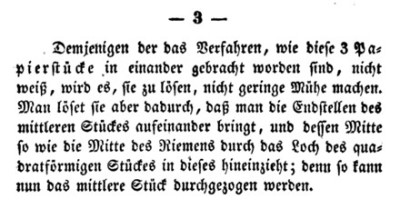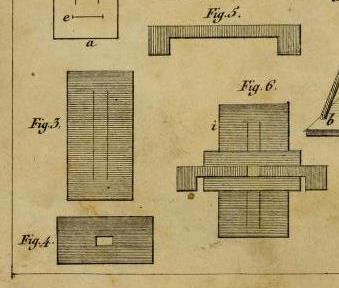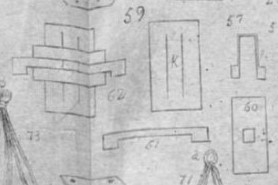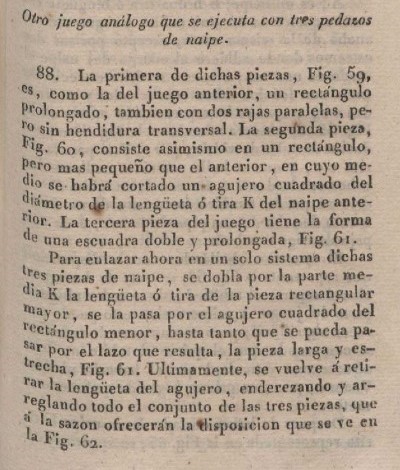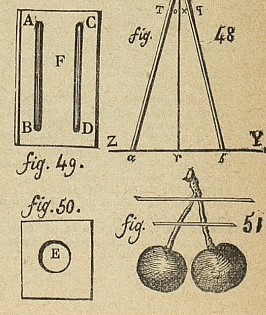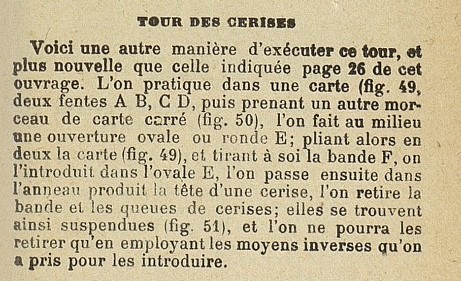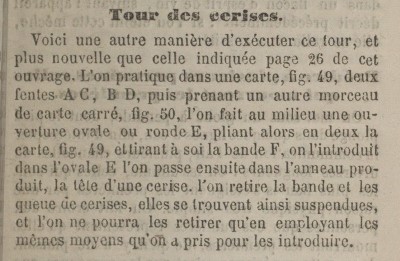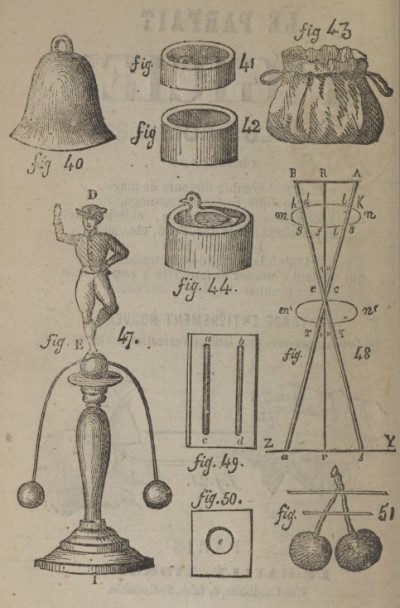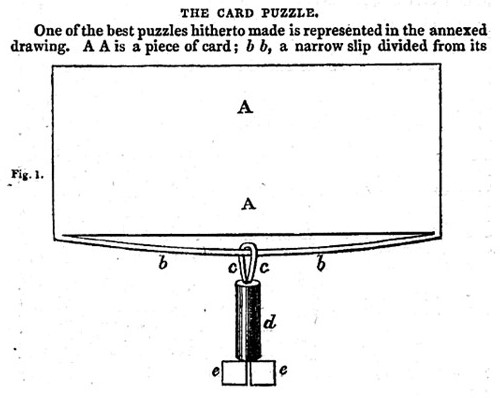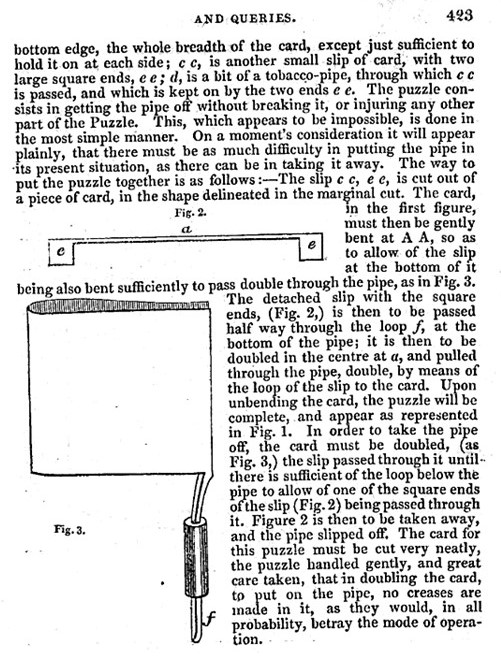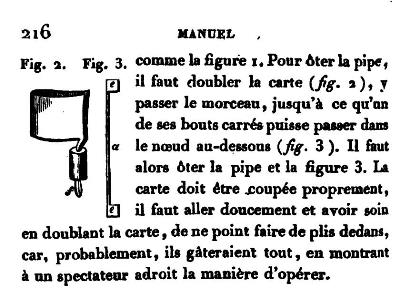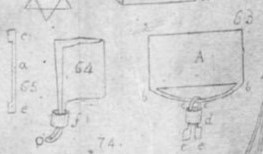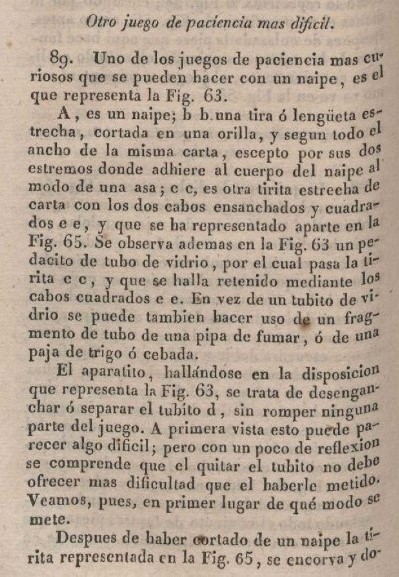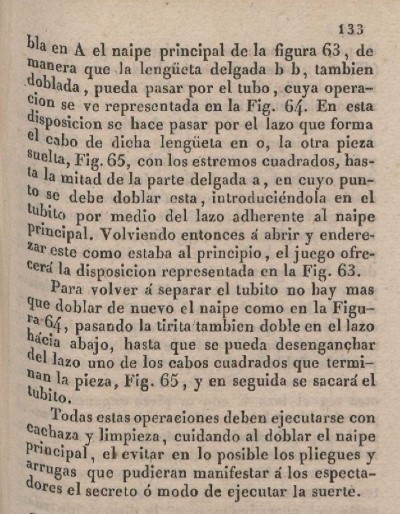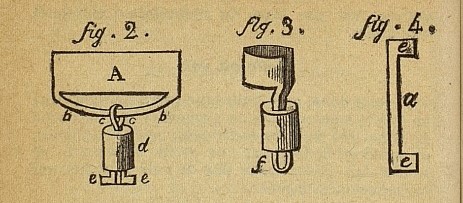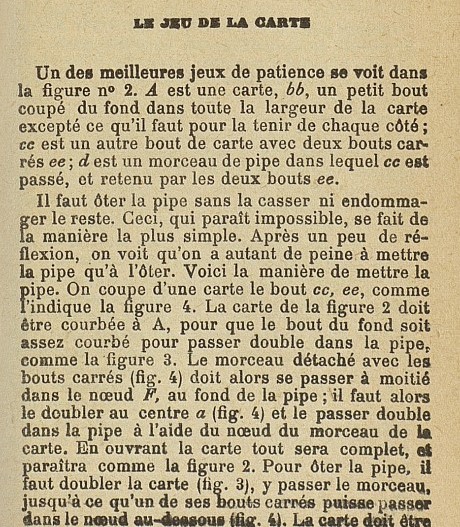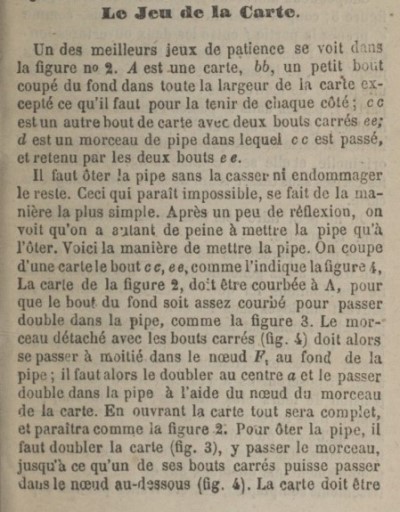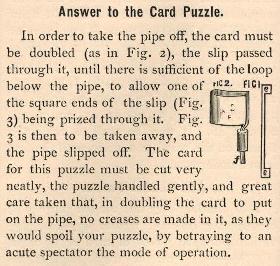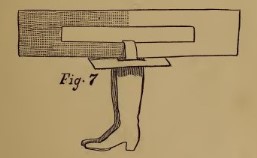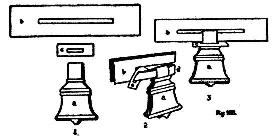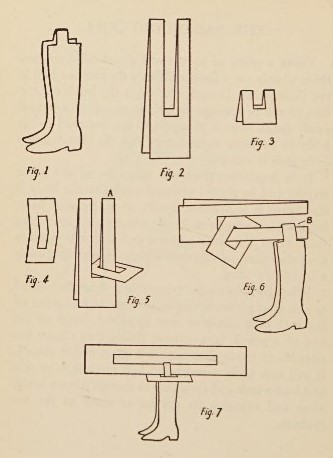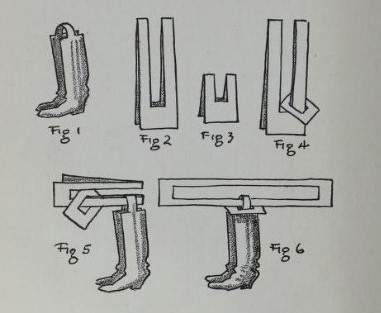| The Public Paperfolding History Project
Last updated 29/9/2024 x |
|||||||
| The Cherries Puzzle / The Three Pieces Puzzle / The Card Puzzle/ The Key-Ring Puzzle / The Boot Puzzle / The Liberty Bell Puzzle | |||||||
| This
page is being used to collect information about the
history of four related puzzles, none of which can be
solved without folding the paper or card of which they
are, at least partly, constructed. Please contact me if
you know any of this information is incorrect or if you
have any other information that should be added. Thank
you. ********** The Cherries Puzzle 1502 The first appearance of the Cherries Puzzle in the historical record that I know of is in the manucript 'De Viribus Quantitatis' by Luca Pacioli which was written in or around 1502. I have not been able to access the original document or an English translation but the dissertation 'Luca Pacioli and his 1500 book De Viribus Quantitatis' (which can be found at http://repositorio.ul.pt/bitstream/10451/18435/1/ulfc113829_tm_Tiago_Hirth.pdf) states that the ms says: 'Take and place 2 cherries in a letter split in half. Two cherries are strung to a piece of paper cut in a particular way and are left as a puzzle to be removed. This is an impossible object.' And comments that: 'Pacioli makes reference to a missing illustration while explaining how to remove the cherries. It is most likely that this puzzle is the following: Take a piece of paper, cut it so that an oblong rectangular slip is created. By one of its shorter sides, make a hole next to the slip of paper. The cherries, or a string with two rings attached, are placed on the slip by folding the long rectangular bit through the hole. After unfolding the piece of paper again, the stem of the cherries secures them to the strip of paper.' *********** 1684 The Cherries Puzzle also appears, in both single and double forms, in the 1684 edition of Simon Witgeest's 'Het natuurlyk tover-boek'.
********** The single version of the puzzle also appears: 1707 In 'Natürliches Zauber-Buch oder neuer Spiel-Platz der Kunste' by Simon Witgeest, which was published in 1707.
********** 1723 In the fourth volume of the 1723 edition of Jacques Ozanam's 'Récréations mathématiques et physiques'
********** 1733 In 'Enganos a Ojos Vistas, Y Diversion de Trabajos' by Pablo Minguet E Irol, which was published in Barcelona in 1733.
********** 1747 In 'I Giochi Numerici Fatti Arcani' by Iuseppe Antonio Alberti, which was published by Bartolomeo Borghi in Bologna in 1747.
********** 1759 In 'Tresor des Jeux' by Carlo Antonio was published in Geneva by Henri-Albert Gosse & Comp and in La Haye, The Netherlands, by Pierre Gosse, Junior, both in 1759.
********** 1765 In Part Seven of 'Die Zehenmal Hundert und Eine Kunst' by Albrecht Ernst Friedrich von Crailsheim, which was published in 1765.
********** 1828 As 'The Cherry Cheat' in The Boy's Own Book' by William Clarke, which was was published by Vizetelly, Branston and Company in London in 1828.
********** 1831 As 'Le Tour des Cerises' in Volume 2 of 'Manuel des Jeunes Gens', which was published in Paris by Librairie Encyclopedique de Roret in Paris in 1931.
********** 1839 In Book 2 of 'Neuer Wunder-Schauplatz der Kunste' by Johann Heinrich Moritz von Poppe, which was published in Stuttgart in 1839.
*** The same puzzle appears in its original form in Book 6.
********** In 'El Brujo en Sociedad' by D J Mieg, which was published by Los Hijos de Dona Catalina Pinuela in Madrid in 1839.
*** Another way to present the same puzzle
********** 1860 As 'Le Tour des Cerises' in 'L'Ancienne et la Nouvelle Collection des Tours de Magie' by M Lecomte, which was published by S Borneman in Paris in 1860.
********** 1861 In 'Le Parfait Magicien le Plus Complet', which was published by Le Bailly, Libraire in Paris in 1861.
********** 1864 In 'Spielbuch fur Knaben' by Hermann Wagner, which was published by Verlag von Otto Spamer in Leipzig in 1864, although the foreword is dated May 1863, which argues that the book was complete at that date.
********** 1880 As 'The Cherry Cheat' in the 'thoroughly revised and considerably enlarged' edition of 'The Boy's Own Book', which was published in London by Crosby, Lockwood and Co in 1880.
********** 1884 As 'La Probleme des Cherises' in 'Jeux et Jouet du Jeune Age' by Gaston Tissandier, which was published by G Masson in Paris in 1884, this time with the cherry stems threaded through two holes.
********** 1869 In 'De Kleine Natuurkundige' by Pieter Beets, which was published by D Noorthoven Van Goor in Leiden. The work is undated but said to be from 1869.
********** 1900 In 'Mes Jolie Jeux' by Henriette Suzanne Bres, which was published by Librairie Hachette in Paris in 1900.
********** 1903 In 'La Recreation En Famille' by Tom Tit, which was published in Paris in 1903 by Librairie Armand Colin.
********** 1918 In 'Ciencia Recreativa' by Jose Estralella, which was published by Gustavo Gili in Barcelona in 1918, along with a variation similar to The Liberty Bell (see below).
********** 1939 TAs 'The Paper and String Puzzle' in 'Fun with Paper' by Joseph Leeming, which was published by Spencer Press Inc in Chicago in 1939.
********** 1944 In 'Ideas Practicas para Juegos y Entretenimientos' by Jorge A Duclout, the second edition of which was published in Buenos Aires in 1944. In this instance the cherries are replaced by buttons.
********** 1963 As 'The Button Puzzle' in 'Party Lines' by Robert Harbin was published by the Olbourne Book Co in London in 1963.
********** The Three Pieces Puzzle 1636 As far as I know this version of the puzzle first appears in 'Deliciae physico-mathematicae, oder mathematische und philosophische Erquickstunden' by Daniel Schwenter, which was first published in 1636.
********** It also appears: 1684 In the 1684 edition of Simon Witgeest's 'Het natuurlyk tover-boek'.
********** 1707 In 'Natürliches Zauber-Buch oder neuer Spiel-Platz der Kunste' by Simon Witgeest, which was published in 1707.
********** 1759 In Column 1076 of 'Onomatologia curiosa artificiosa et magica oder ganz natürliches Zauber-lexicon', which was published in 1759,
********** 1762 In Part Six of 'Die Zehenmal Hundert und Eine Kunst' by Albrecht Ernst Friedrich von Crailsheim, which was published in 1762.
********** 1831 In 'Mechanemata oder der Tausendkünstler' by Dr Heinrich Rockstroh, which was published in 1831.
********** 1839 In the 5th edition of 'Das Buch der Zauberei' by Johann August Donndorff, which was published in Vienna in 1839.
********** In Book 2 of 'Neuer Wunder-Schauplatz der Kunste' by Johann Heinrich Moritz von Poppe, which was published in Stuttgart in 1839.
********** In 'El Brujo en Sociedad' by D J Mieg, which was published by Los Hijos de Dona Catalina Pinuela in Madrid in 1839.
********** 1860 As 'Le Tour des Cerises' in 'L'Ancienne et la Nouvelle Collection des Tours de Magie' by M Lecomte, which was published by S Borneman in Paris in 1860.
********** 1861 In 'Le Parfait Magicien le Plus Complet', which was published by Le Bailly, Libraire in Paris in 1861.
********** The Card Puzzle 1828 Essentially the same puzzle, but in another form, appears under the title 'The Card Puzzle' in 'The Boy's Own Book' by William Clarke, which was published by Vizetelly, Branston and Company in London in 1828.
********** This puzzle also appears: 1831 In Volume 2 of 'Manuel des Jeunes Gens', which was published in Paris by Librairie Encyclopedique de Roret in Paris in 1931.
********** 1839 In 'El Brujo en Sociedad' by D J Mieg, which was published by Los Hijos de Dona Catalina Pinuela in Madrid in 1839.
********** 1860 As 'Le Jeu de la Carte' in 'L'Ancienne et la Nouvelle Collection des Tours de Magie' by M Lecomte, which was published by S Borneman in Paris in 1860.
********** 1861 In 'Le Parfait Magicien le Plus Complet', which was published by Le Bailly, Libraire in Paris in 1861.
********** 1882 In 'Bright and Happy Homes' by Peter Parley, Jr, which was published in Chicago and New York by Fairbanks, Palmer and Co in 1882. My thanks to David Shall for this information.
********** Das Neckende Schloschen / Die behangte herigeftalt 1819 This version of the puzzle occurs in 'Leichte Künsteleien zum Vergnügen und zum Nutzen für Kinder und Nichtkinder' by Dr Heinrich Rockstroh, which was published by Ludwig Wilhelm Wittich in Berlin in 1819.
********** The Key-Ring Puzzle 1963 This version of the Cherries Puzzle appears in 'Party Lines' by Robert Harbin was published by the Olbourne Book Co in London in 1963.
********** The Boot Puzzle / The Liberty Bell Puzzle 1887 As far as I know this version of the puzzle first appears in as 'The Boot Puzzle' in 'How? Or Spare Hours Made Profitable for Boys and Girls' by Kennedy Holbrook, which was published by Worthington Co in New York in 1887.
********** 1922 Another similar variation, called 'The Liberty Bell', first appeared in 'Houdini's Paper Magic', which was published by E P Dutton and Company of New York in 1922.
********** The same puzzle appears: 1936 As 'The Boot Puzzle' in 'More Things Any Boy Can Make' by Joseph Leeming, which was published by D Appleton-Century Company in New York and London in 1936.
********** 1939 As 'The Paper Boot Puzzle' in 'Fun with Paper' by Joseph Leeming, which was published by Spencer Press Inc in Chicago in 1939.
********** |
|||||||
